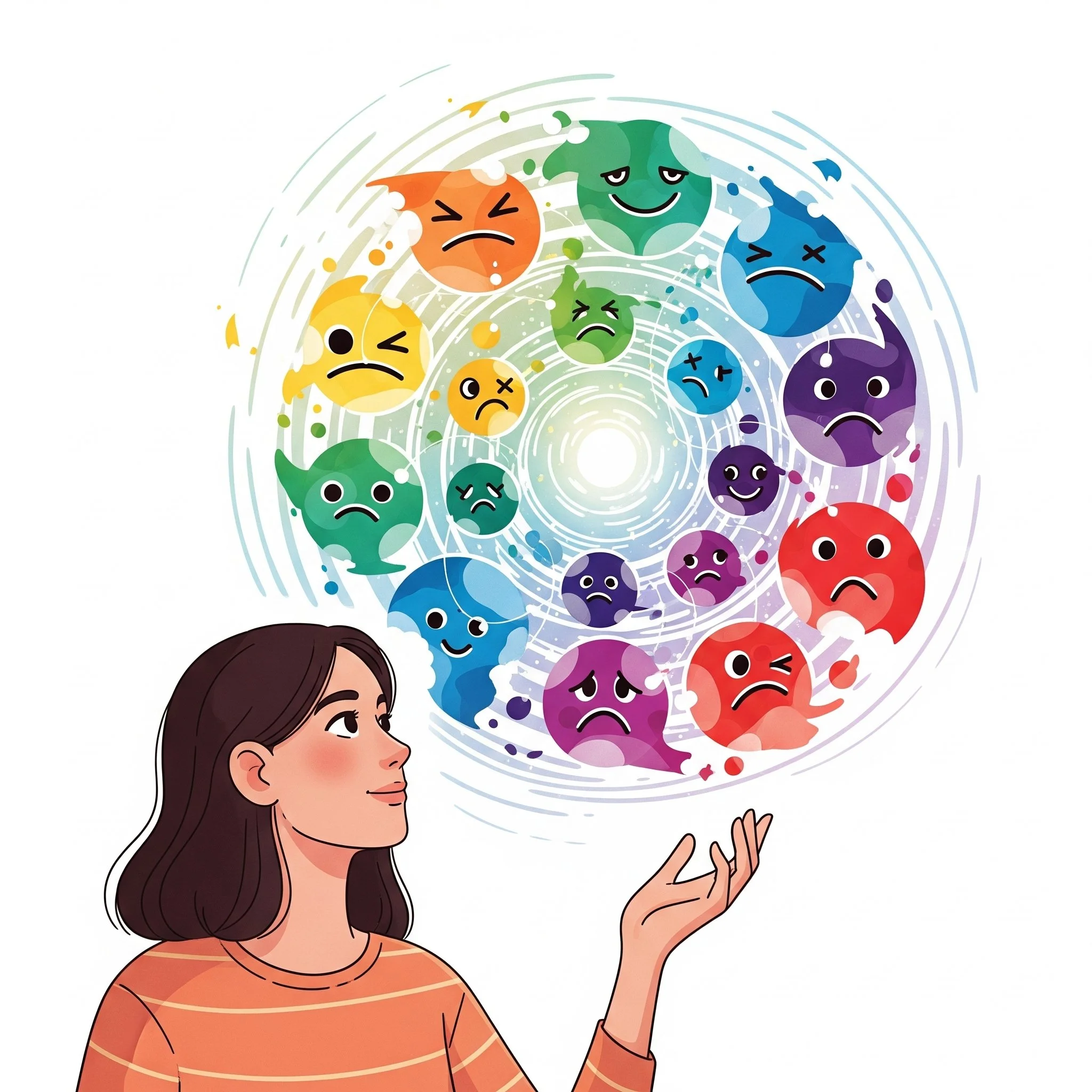Emotional Literacy
In this season-opening episode of Feelings Matter, Michelle, Tina, and Heather dive deep into the meaning and impact of emotional literacy—a topic that might sound academic, but is rooted in everyday life. Emotional literacy, simply put, is our ability to identify, name, and understand our emotions and the emotions of others. While its formal roots come from psychologist Claude Steiner's five-part definition, the team focuses on what it really looks like in our day-to-day lives—recognizing, naming, and responding to emotions in a conscious and empowered way.
The discussion moves beyond theory as the hosts share personal stories about growing up with limited emotional vocabulary. Michelle reflects on her empathetic upbringing while admitting that emotional vocabulary wasn’t part of her childhood language. Tina, on the other hand, shares a vivid metaphor—emotional "shrapnel"—to describe growing up with overwhelming and unprocessed emotional reactions. These reflections reveal a universal truth: many of us were taught to react to emotion-driven behaviors, but not how to talk about or process the emotions themselves.
What makes emotional literacy so vital is its power to shift how we experience and manage our emotions. With tools like FeelWise—designed to help people visually recognize and name 156 different emotions—the gap between thinking and feeling starts to close. As Michelle notes, naming an emotion like “bitterness” instead of just “anger” provides clarity and insight, offering a pathway to understanding and choice, rather than reaction. It’s not just about emotional intelligence, but the ability to communicate more clearly, process more deeply, and live more richly.
Ultimately, the conversation emphasizes that this isn’t easy work—but it’s profoundly rewarding. Just as we need a variety of flavor words to describe food, we need a broad emotional vocabulary to describe our inner lives. Emotional literacy makes our self-awareness more precise and our relationships more compassionate. And when we approach our feelings—and the feelings of others—without judgment, we’re able to witness, hold space, and truly connect.
Mindful Mindset
The mindset behind emotional literacy is rooted in non-judgment, curiosity, and compassionate awareness. Rather than labeling emotions as “good” or “bad,” we begin to see them as data points—information about our inner world that can guide our decisions and relationships. This mindset encourages us to pause, reflect, and respond rather than react, especially when emotions feel overwhelming or unfamiliar.
Mindfulness practices associated with emotional literacy include:
Body scans to recognize where emotions reside physically.
Naming and noticing—taking time to identify the specific emotion you’re feeling without judgment.
Journaling prompts such as: “What emotion am I feeling right now?” or “What might this emotion be trying to tell me?”
FeelWise Cards & Wheels: These offer visual cues and layered definitions to help you explore the emotional spectrum. The cards include physical cues, mindset challenges, and processing techniques, while the wheels offer a broader context of emotional “families” and intensities.
By Princess Nicole Salas,
Princess Nicole Salas is a FeelWise Assistant with a passion for emotional intelligence, empathy, always exploring what it means to understand people more deeply. She loves watching movies and reading books. She believes even the quietest role can create meaningful impact and routed and care and intention.
You can listen to and follow Feelings Matter on:


